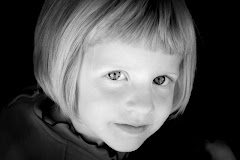A creature with the head of a lion and the body of a fish. The fish body recalls of Singapore's ancient name when in was once a fishing village — Temasek — meaning "sea town" in Javanese, while the lion head represents Singapore's original name — Singapura — meaning "lion city" in Sanskrit and Malay. Sang Nila Utama, a Malay Prince wanted to find somewhere to build a new City and set out to have a look at some islands off the coast of Sumatra. After making it safely to the island, he went inland to do some hunting and saw a strange creature with a red body, black head and white breast. He was told that it was a Lion. (though later studies of the area show that Lions were never present there and what he saw was probably a Tiger) He felt it was a very good omen. He called the city Singapura, (Singa means Lion and pura means City).

City view of Singapore
Singapore was known as the island of trade and a port of significant importance. The country was founded on the convergence of four different countries uniting: Britian, Malaysia, India and China.
 Siloso Beach on Sentosa Island - Singapore
Siloso Beach on Sentosa Island - SingaporeSentosa, means peace and tranquillity in Malay.
A haven for world-class entertainment and food, a mix of modern pop culture and old-age architecture. I've never seen so much food and shopping in one location!
.JPG) Singapore's Thian Hock Keng Temple
Singapore's Thian Hock Keng TempleThis Taoist temple, erected in 1821 by seamen grateful for safe passage, stands where Singapore's waterfront used to be before reclamation. The materials used to construct the temple are truly international, with ironwork from Scotland, tiles from England and the Netherlands, and towering granite pillars entwined with dragons from China. Many ancestral tablets stand in the courtyard, and massive lions stand guard at the doors.
.JPG)
Jamae Mosque in Singapore's Chinatown

Hong Kong - View from Victoria Peak
The mountain is located in the western half of Hong Kong Island. Because of its view, history and spectacular location, Victoria Peak is strongly attached to an air of prestige.
The monastery was founded in 1906 by three monks visiting from Jiangsu and was initially known as "The Big Hut". It was renamed to its present name in 1924. The main temple houses 3 bronze statues of the Buddha representing his past, present and future lives as well as many Buddhist scriptures.
Po Lin Monastery Temple - Worship with incense
.JPG)
.JPG)
This is a large bronze statue of the Buddha, completed in 1993, and located at Ngong Ping, Lantau Island, in Hong Kong. Also known as the Big Buddha, it is the world's tallest outdoor seated bronze Buddha. The statue symbolizes the harmonious relationship between man and nature, people and religion. It is a major center of Buddhism in Hong Kong.
Buddhistic statues praising and making offerings to the Tian Tan Buddha
.JPG) Stanley is famous for its two beaches: Stanley Main Beach, located on the eastern side of the peninsula, and St. Stephen's Beach, on the western side. Like many beaches in Hong Kong, they also have netted perimeters to protect swimmers from sharks. The larger of the two beaches - Stanley Main Beach, which is also popular with windsurfers, hosts the Stanley Dragon Boat Championships each year in June to celebrate the Tuen Ng Festival.
Stanley is famous for its two beaches: Stanley Main Beach, located on the eastern side of the peninsula, and St. Stephen's Beach, on the western side. Like many beaches in Hong Kong, they also have netted perimeters to protect swimmers from sharks. The larger of the two beaches - Stanley Main Beach, which is also popular with windsurfers, hosts the Stanley Dragon Boat Championships each year in June to celebrate the Tuen Ng Festival..JPG)
Stanley Market, a large open-air marketplace, has become well known for its bargains in clothing - particularly silk garments and traditional Chinese dress - as well as toys, ornaments, luggage, souvenirs, and Chinese arts and crafts. It is a popular destination for both tourists and locals alike. People are drawn here by the cheap goods that would usually fetch a much higher price elsewhere.

.JPG)

.JPG)

.JPG)
.JPG)
.JPG)
.JPG)




No comments:
Post a Comment